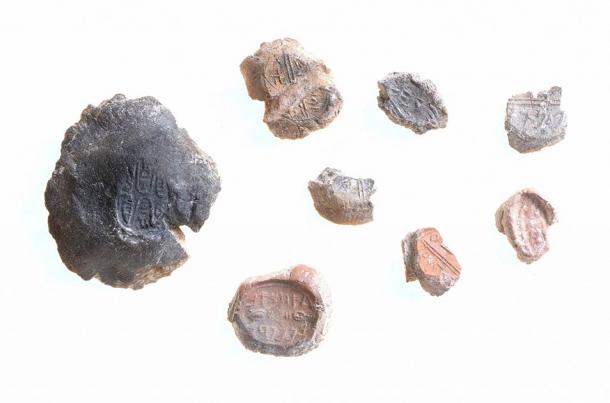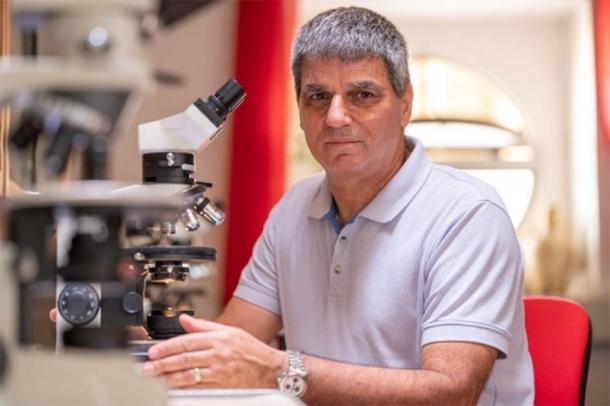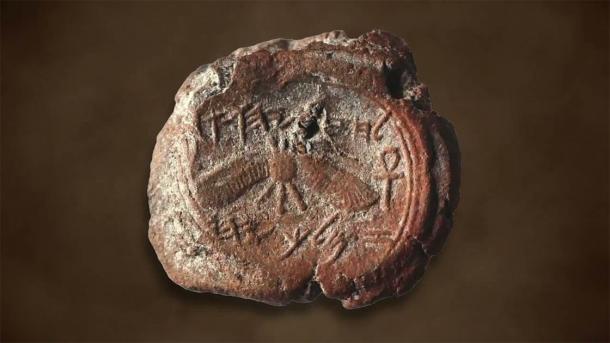A professor who bought a 2,300-year-old Iron Age royal seal, only paid a handful of shekels for something beyond value. About forty years ago Professor Yigal Ronen from the Ben-Gurion University of the Negev (BGU) was strolling through the Bedouin market in Beersheba, a biblical town in southern Israel, now a city and the main center of the Negev region. Ronen came across a tiny oval seal and when he inspected it closer he found a tiny imprinted roaring lion standing on all four legs, which indicated that it was a royal seal.
The market trader was unsure as to the origin of the artifact, that measures only 23.4 millimeters (1 inch) by 19.3 mm (0.75 inch), and the professor ended up buying it for only “10 old shekels.” And now, researchers at BGU have revealed that the seal is earliest inscribed clay seal impression ever found in Israel. What´s more, they say it has royal origins.

A collection of “typical” bulla or seals found in Israel. (Clara Amit / Israel Antiquities Authority )
Using Science, Researchers Were Able To Date The Royal Seal
Dating from the Iron Age , about 2,300 years ago, the researchers from BGU have declared the seal is “the earliest seal discovered in Israel” with writing on it. And they have found evidence to suggest it was “a royal seal,” used during the reign of Israelite King Jeroboam II.
So why did Ronan buy it? What did he see that everyone else had overlooked? An article in the Jerusalem Post says the professor noticed that impressed above and below the roaring lion were the words “to hear,” and this offered him a clue as to is possible origins.
Professor Ronen knew that in 1904 a famous seal was discovered at the northern Israeli site of Tell Megiddo that was inscribed with the words “to hear Abed Yerba’am,” which at that time represented the largest Hebrew seal ever discovered. However, because Ronen bought the seal for so little money, he was always suspicious that it was a fake.
So, he recently turned to a team of expert archaeological researchers to verify its origins. The research team comprised Prof. Eliezer Oren and Prof. Shmuel Ahituv from BGU, Dr. Avner Ayalon and Dr. Miryam Bar-Matthews from the Geological Survey of Jerusalem and Dr. Orit Shamir from the Israel Antiquities Authority . Together, the researchers have now confirmed the royal seal is “a smaller version of others used by royal officials.”

Prof. Eliezer Oren of the Ben-Gurion University of the Negev (BGU), who tested the royal seal and testified that it was not a fake. ( Ben-Gurion University of the Negev )
Dating The Royal Seal With Geology And Patina
The seal was subjected to a series of laboratory tests that showed it was sealed on a linen cloth, when its material was in a relatively dry state, and then baked at a temperature of about 750 degrees Celsius (1382 degrees Fahrenheit). Testing the bulla (medieval Latin for “a round seal”; plural bullae), the team was able to ascertain that it had come from a place where “limestone rocks are exposed in the vicinity of basalt-containing olivine.”
Goren said he and the other researchers studied “hundreds of securely identified bullae from legal excavations to get a reference point.” The geologists were able to successfully narrow down the possibilities to areas in the Lower Galilee, and the Jezreel and Beit She’an valleys.
Further tests were performed that analyzed the isotopic composition of the bulla’s “patina.” This thin layer, usually green, forms naturally on stones containing the metals copper and bronze when they have been exposed to the air for a long time. According to The Times of Israel patina “can be faked by forgers, up to a point.”
The scientific processes required to determine that this seal wasn’t a fake took several years, due to what Dr Goren described as an extensive “protocol of examinations.” Dr Goren likened the process to “a court” in which they need to be sure “beyond any reasonable doubt” and this required several, often overlapping, tests.
Although this has now been proven beyond reasonable doubt, there will still be those who question its legitimacy. But for now this seal is declared genuine.

The King Hezekiah Bulla, excavated in 2015 from an ancient Jerusalem garbage dump, was dated to the reign of Judean king Hezekiah, the “first” Judean king, between 716 and 686 BC. (Reese Zoellner / Watch Jerusalem )
The Exceptional Royal Seal Is Now On Public Display
Using this series of protocols professor Goren has provided expert testimony in several high-profile archaeological cases of alleged forgery, and he has analyzed numerous seals for the Israel Police and the Israel Antiquities Authority.
The Times of Israel article says the royal seal might never have come to light if Dr. Oren, the founder of BGU, hadn’t persuaded the Ronen family to permit high-tech testing.
And now that tests have been completed, the Ronen family have agreed to hand over the seal to the Israel Antiquities Authority to be exhibited in the Israel Museum.
Top image: The royal seal bought at a market for next to nothing that is now a priceless Israeli artifact. Source: Dani Machlis / Ben-Gurion University of the Negev
By Ashley Cowie
Related posts:
Views: 0
 RSS Feed
RSS Feed

















 December 11th, 2020
December 11th, 2020  Awake Goy
Awake Goy  Posted in
Posted in  Tags:
Tags: 
















